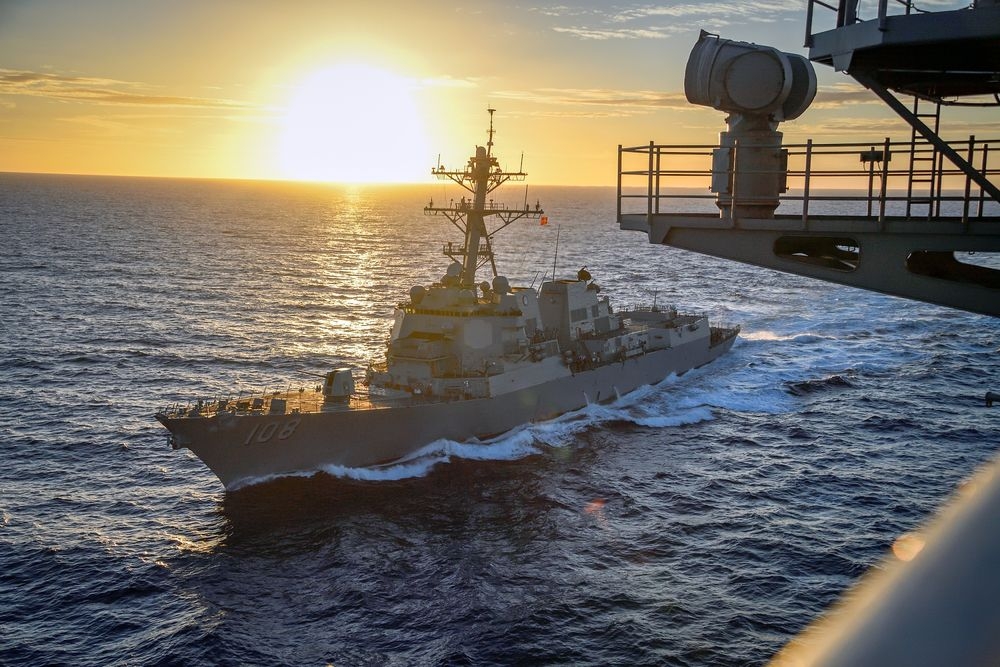China condemns US for destroyer sailing near Vietnam’s Hoang Sa archipelago
 |
US destroyer Wayne E. Meyer. Source: US Navy
Commander Reann Mommsen, a spokeswoman for the US Navy’s Seventh Fleet, told Reuters that the destroyer Wayne E. Meyer challenged territorial claims in the operation, including what she described as excessive Chinese claims around the Vietnam’s Hoang Sa (Paracel) archipelagos, a move likely to anger Beijing.
According to CNN, the Chinese Defense Ministry posted a statement online in response to the operation saying the US warship "trespassed into waters off China's Xisha Islands (the name China calls Vietnam’s Hoang Sa archipelago) without permission of the Chinese government."
"The US side has been practicing 'navigational hegemony' in the South China Sea (the name China calls East Sea) for a long time. Such actions have seriously undermined China's sovereign interests, and proven the US side's complete lack of sincerity in maintaining global peace as well as regional security and stability," China's People's Liberation Army (PLA) Southern Theater Command spokesman Li Huamin said in the statement.
The USS Wayne E. Meyer conducted a similar operation last month, sailing within 12 nautical miles of the Chu Thap (Fiery Cross) and Vanh Khan (Mischief) Reefs in Truong Sa (Spratly) archipelago.
China’s deployment of bombers and missiles in the East Sea has run counter to international law and seriously violated Vietnam’s sovereignty, in both legal and historical aspects, over Hoang Sa and Truong Sa archipelagoes.
China’s sending of weapons to illegal structures in Hoang Sa and Truong Sa only raises tensions and blights trust among parties involved in the East Sea issue.
Hoang Sa and Truong Sa are two big archipelagos with key strategic locations among Vietnam’s islands, and the country’s sovereignty over them is clearly reflected through historical documents.
The East Sea borders Vietnam in the east and the south. Vietnamese people have long called this body of water the “East Sea” because it is east of the country. Hoang Sa and Truong Sa archipelagos are at the centre of this sea, one of the busiest shipping lanes in the world.
Vietnamese history records repeatedly mentioned these chains of islands as indispensable parts of the country’s territory and territorial sea such as “Phu bien tap luc” (Miscellaneous chronicles of the pacified frontier) by Le Quy Don in 1776, “Thien Nam tu chi lo do thu” (Collection of the South’s Road Map) by Do Ba in the mid-17th century, and “Lich trieu hien chuong loai chi” (A classified treatise of the institutions of successive dynasties) by Phan Huy Chu in the early 19th century.
This fact can also been seen in official history and geography records of the Nguyen Dynasty (1802 – 1945), including “Dai Nam thuc luc” (Chronicle of Dai Nam – an old name of Vietnam), “Dai Nam nhat thong chi” (Unification records of Dai Nam), and “Dai Nam dia du chi” (Geographical record of Dai Nam).
Notably, there are many documents recording the Nguyen Dynasty’s territorial expansion and establishment and exercising of sovereignty over Hoang Sa and Truong Sa. They include the dynasty’s woodblocks and imperial archives which have been recognised as world documentary heritage by UNESCO./.
VNF/Reuters/CNN
Recommended
 World
World
Pakistan NCRC report explores emerging child rights issues
 World
World
"India has right to defend herself against terror," says German Foreign Minister, endorses Op Sindoor
 World
World
‘We stand with India’: Japan, UAE back New Delhi over its global outreach against terror
 World
World
'Action Was Entirely Justifiable': Former US NSA John Bolton Backs India's Right After Pahalgam Attack
 World
World
US, China Conclude Trade Talks with Positive Outcome
 World
World
Nifty, Sensex jumped more than 2% in opening as India-Pakistan tensions ease
 World
World
Easing of US-China Tariffs: Markets React Positively, Experts Remain Cautious
 World
World
